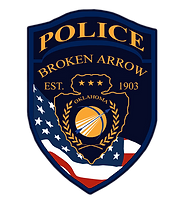
BROKEN ARROW POLICE

CRIME SCENE UNIT

The Crime Scene Unit operates under the Criminal Investigations Division. There are currently three Crime Scene Investigators that rotate on an On-Call schedule for various scenes and Call-Out's after hours.
Crime Scene Investigators respond to major crime scenes including but not limited to: homicides, suicides, all unattended deaths, kidnappings, felonious sexual assaults, armed robberies, traffic fatality scenes, scenes involving explosive or incendiary devices, police officer use of force resulting in serious injury/death, any other incident requiring the expertise or specialized equipment of the Crime Scene Unit
A Crime Scene Investigator's main function on a scene is to document and collect any evidence. This would include marking important items, taking digital photographs, collecting items/areas of interest via crime scene collection kits, and diagraming scenes.



The Crime Scene Unit utilizes it's own in-house lab for processing any lab requests from officers or detectives. They also act as the liaison to other outside lab services including OSBI, Tulsa Forensic Lab and the Office of the Chief Medical Examiner.

There are many skills a Crime Scene Investigator must become familiar with. Several skills include proficiency in latent print collections, observations of blood spatter patterns, and bullet trajectory measurements.









A brand new tool to the unit is the addition of a high-speed 3D laser scanning system that allows for increased efficiency in scene diagraming and documentation. The scanner and software allows investigators to create realistic 3D models of crime scenes with accurate measurements and dimensions.
